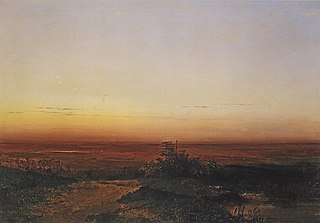
The Baltic languages are a branch of the Indo-European language family spoken natively or as a second language by a population of about 6.5–7.0 million people mainly in areas extending east and southeast of the Baltic Sea in Europe. Together with the Slavic languages, they form the Balto-Slavic branch of the Indo-European family.
Zibelthiurdos is a Thracian god of heaven, lightning and rain, whose name is known mainly from epigraphic monuments. The only known reference to this god so far in ancient literature is in Cicero's speech against Pizon, where he is mentioned under the name Jovi Vrii. According to Cicero, Jupiter Urius had the most ancient and venerated of the barbarian temples, which was sacked by invading armies and resulted in diseases from which those afflicted never recovered.

Bendis was a Thracian goddess associated with hunting and the moon. Worship of the goddess seems to have been introduced into Attica around 430 BC. Some writers identified Bendis in Attica with the goddess Artemis, but the temple of Bendis at Piraeus which was near the temple of Artemis, clearly display that the two goddesses were distinct. She was a huntress, like Artemis, but was often accompanied by dancing satyrs and maenads, as represented on a fifth-century red-figure stemless cup at Verona.

Dacian is an extinct language generally believed to be a member of the Indo-European language family that was spoken in the ancient region of Dacia.

The Thracian language is an extinct and poorly attested language, spoken in ancient times in Southeast Europe by the Thracians. The linguistic affinities of the Thracian language are poorly understood, but it is generally agreed that it was an Indo-European language with satem features.

*H₂éwsōs or *Haéusōs is the reconstructed Proto-Indo-European name of the dawn goddess in the Proto-Indo-European mythology.

The Paleo-Balkan languages or Palaeo-Balkan languages is a grouping of various extinct Indo-European languages that were spoken in the Balkans and surrounding areas in ancient times.

The Costoboci were a Dacian tribe located, during the Roman imperial era, between the Carpathian Mountains and the river Dniester. During the Marcomannic Wars the Costoboci invaded the Roman empire in AD 170 or 171, pillaging its Balkan provinces as far as Central Greece, until they were driven out by the Romans. Shortly afterwards, the Costoboci's territory was invaded and occupied by Vandal Hasdingi and the Costoboci disappeared from surviving historical sources, except for a mention by the late Roman Ammianus Marcellinus, writing around AD 400.
The linguistic classification of the ancient Thracian language has long been a matter of contention and uncertainty, and there are widely varying hypotheses regarding its position among other Paleo-Balkan languages. It is not contested, however, that the Thracian languages were Indo-European languages which had acquired satem characteristics by the time they are attested.

The Thracian horseman is a recurring motif depicted in reliefs of the Hellenistic and Roman periods in the Balkans—mainly Thrace, Macedonia, Thessaly and Moesia—roughly from the 3rd century BC to the 3rd century AD. Inscriptions found in Romania identify the horseman as Heros and Eros and also Herron and Eron, apparently the word heros used as a proper name. He is sometimes addressed in inscriptions merely as κύριος, δεσπότης or ἥρως. Inscriptions from Bulgaria give the names Salenos and Pyrmerula/Pirmerula.
Vladimir Ivanov Georgiev (1908–1986) was a prominent Bulgarian linguist, philologist, and educational administrator.
The four Mba languages form a small family of Ubangian languages scattered across the northern Democratic Republic of the Congo. The languages are,

Lombardic or Langobardic is an extinct West Germanic language that was spoken by the Lombards, the Germanic people who settled in Italy in the sixth century. It was already declining by the seventh century because the invaders quickly adopted the Latin vernacular spoken by the local population. Lombardic may have been in use in scattered areas until as late as c. 1000 AD. Many toponyms in modern Lombardy and Greater Lombardy and items of Lombard and broader Gallo-Italic vocabulary derive from Lombardic.
Lucius Calpurnius Proculus was a Roman governor of Dacia. He ruled Dacia for a period in the 160s, reign dates have been given variously as 161 to 164 AD and 162 to 167 AD. He hailed from Ancyra (Ankara), and was known to have owned an estate near Laodikeia. Calpurnius Proculus was killed by the Iazyges.
Iambadoule is a Thracian goddess, epigraphically testified together with the Thracian god Zberthourdos (Sbelsurdos).
This article contains information about Illyrian vocabulary. No Illyrian texts survive, so sources for identifying Illyrian words have been identified by Hans Krahe as being of four kinds: inscriptions, glosses of Illyrian words in classical texts, names—including proper names, toponyms and river names—and Illyrian loanwords in other languages. The last category has proven particularly contentious. The names occur in sources that range over more than a millennium, including numismatic evidence, as well as posited original forms of placenames. The Messapian language, which may be related, does have a small attested corpus, but it is not in this page's scope due to the uncertainty about its relationship to Illyrian.
The Codex Hersfeldensis was a manuscript from the Early Middle Ages. Written between 830 and 850, the codex was found in Hersfeld Abbey in the first half of the 15th century. The codex was brought to Italy by Enoch of Ascoli in 1455, where it was divided up and copied. The original has since been lost. The Codex Hersfeldensis is considered to be the original source for the surviving manuscripts of the Opera Minora – the shorter works of Tacitus, including the Germania.







